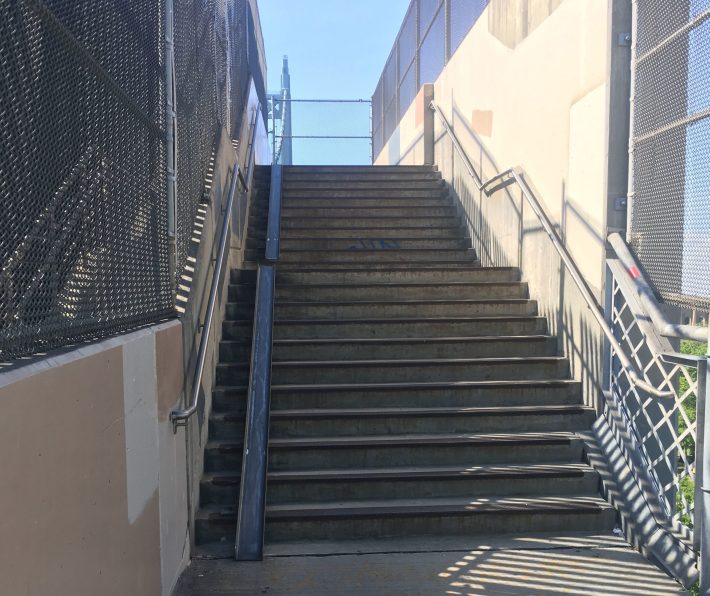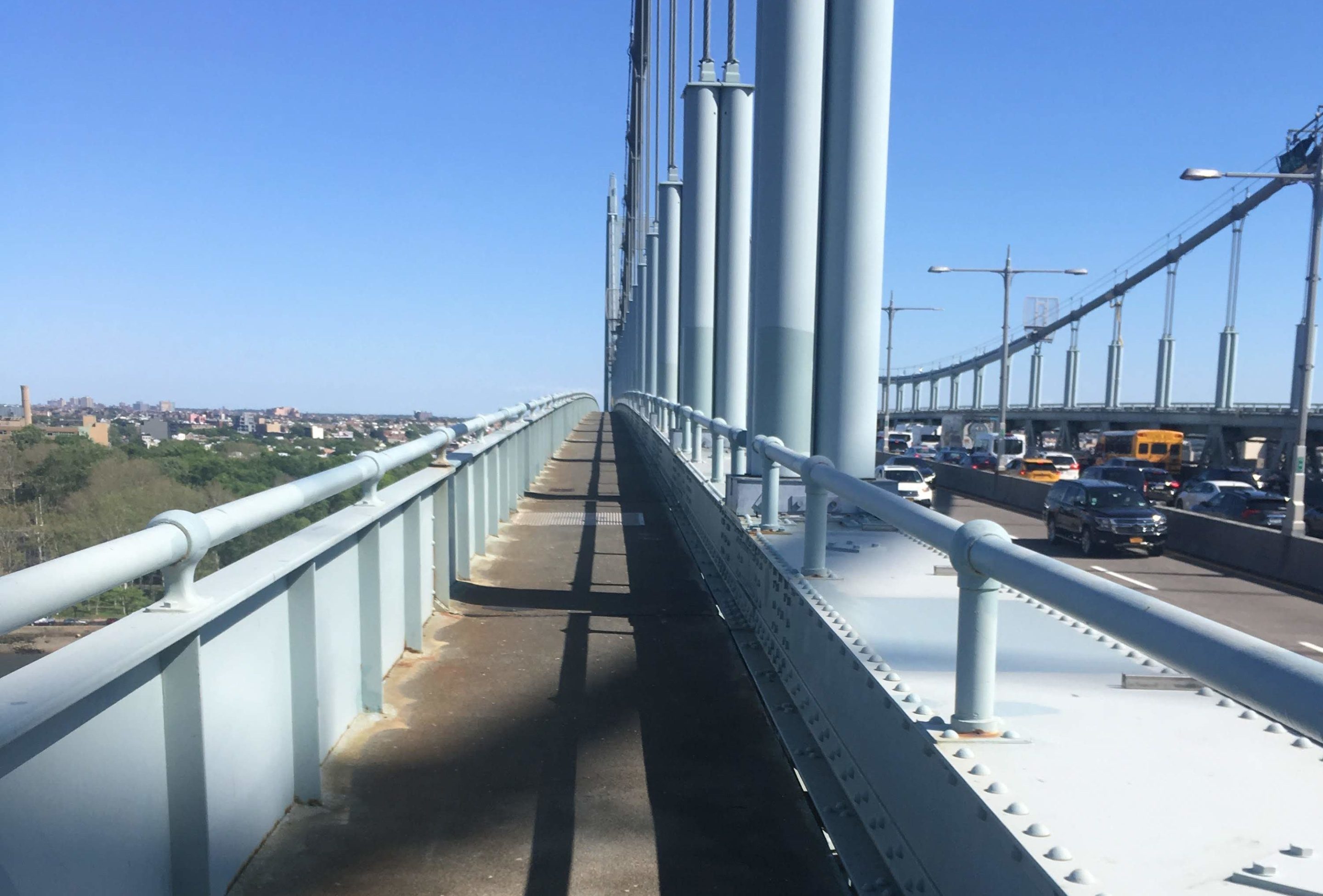It's no longer a bridge too far.
The MTA's long-awaited Bike and Pedestrian Access study that will be released on Wednesday morning is promising that the agency is going to rework the Triborough Bridge's pedestrian path to make way for cyclists. And the MTA is also going to give another look at a Verrazzano Bridge bike and pedestrian path that it was previously accused of sandbagging and burying under inflated costs and inconvenient design.
The biggest step toward allowing cyclists to get on the Triborough Bridge will be when the MTA begins work on widening multiple pedestrian pathways on the bridge to make them ADA-compliant and wide enough to be shared use paths, under the terms of a contract the agency awarded in November 2022. That work involves reconstructing the ramps to the bridge's Manhattan walkway with a completion date of 2023, the Manhattan to Randall's Island connection with an estimated completion in 2025 and the section connecting the Bronx to Randall's Island with an estimated completion in 2025. Cyclists will be legally allowed to use each part of the bridge as each project is finished.
And crucially, the agency is planning to award a contract in late 2023 to remake the northern pedestrian walkway on the Triborough Bridge that connects Queens and Randall's Island, a project that's slated to take about four-and-a-half years. That work, as part of a larger project on the entire bridge, will include creating an entirely new ADA-accessible bike and pedestrian path to Randall's Island and replacing the much-hated staircase on and off the bridge on the Queens side of the bridge.

After that project, the MTA also says that it will look at the possibility of adding a Queens to Randall's Island connection on the south side of the bridge.
When it comes to the Verrazzano Bridge, the MTA is still relying on a previous design that it studied in 2015. Under that plan, the agency would add a pair of separate bike and pedestrian paths to each side of the bridge, a project that the MTA previously priced between $320 million and $370 million, which the agency has said is a more feasible and palatable plan than repurposing an existing lane.
"Retrofitting the Verrazzano-Narrows Bridge with pedestrian and cycling paths is a long-term endeavor requiring feasibility studies and several major capital projects over several years, as identified in the 2015 Verrazzano-Narrows Bridge Master Plan," the agency wrote in the study.
That work, per the MTA, would involve replacing the lower deck to handle the new weight load, completing a new wind analysis based on that new weight and conducting a series of tests to see if the main cables on the bridge could handle the load.
Observers who previously dinged the MTA for its less than enlightened view towards cycling said that the full action plan was a welcome step in the right direction thanks to its commitment to real world contracts and timeframes.
"I like the Triborough action plan discussion because it has a real world 'go to contract' approach with a clear time frame," said Jon Orcutt of Bike New York. "The Verrazzano discussion is more general, but it also has an engaged quality. Overall, the MTA could have responded to the legislation with a generic report that didn’t promise or lead to much and this is much much more than that. Janno Lieber and the people around him took it as an opportunity and not a burden — that’s pretty great and what we needed in this area."
Elsewhere in the report, the MTA reiterated commitments it made previously when discussing bike and pedestrian access. Among those commitments are expanding the use of bike racks on the front of buses, that are currently only in use on the S53, S93, Q50, and Bx23 routes. The agency said it will first expand the bike racks to the S79, Q44, and M60 SBS, before it looks at other routes on local buses and even studies the possibility of adding the racks to express buses.
The agency is also going to study the possibility of adding bike storage space on the next generation of commuter rail trains it buys and retrofitting existing commuter rail trains for bike storage, look at where it can add secure bike parking to land it owns at commuter rail stations and work with the city DOT to place secure bike parking at subway stops and transit hubs around the city.
The MTA also promised an age of collaboration with the DOT on the subject of pedestrian and cycling safety and access, including looking for grant money to expand bike parking and even helping with "input and expertise on different routing and design options and, when connections utilize MTA property, help with implementation as well."






